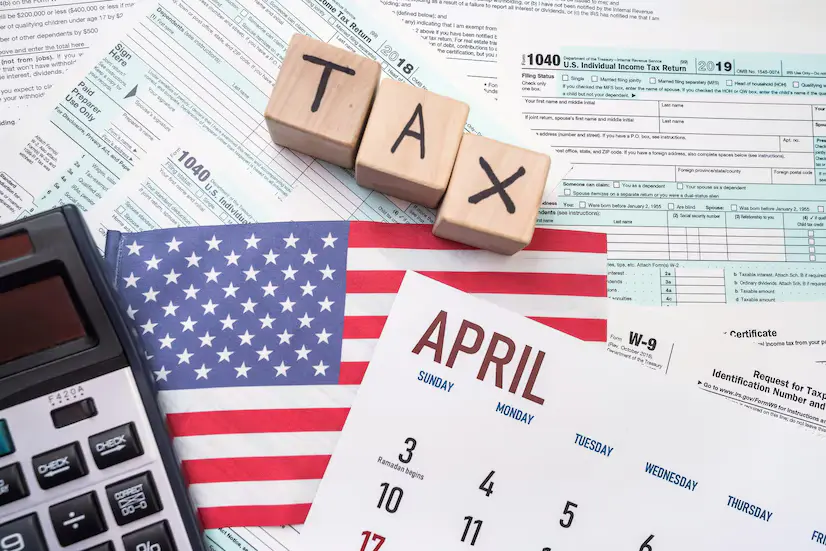Introduction to the EB5 Visa
Are you an investor with dreams of immigrating to the United States? Look no further than the EB5 Visa program a gateway to a new life filled with opportunities and possibilities. Whether you’re seeking a fresh start or aiming to expand your business ventures, the EB5 Visa could be your ticket to success. Join us as we explore why this visa is the smart choice for investors looking to make their American dream a reality!
What is the EB5 Visa?

The EB5 Visa, also known as the Immigrant Investor Program, is a pathway for foreign investors to obtain a green card by making a qualifying investment in the United States. This visa program was established to stimulate the U.
S. economy through job creation and capital investment from overseas.
Unlike other visa options that may be based on family ties or employment sponsorship, the EB Visa offers investors more control over their immigration process by allowing them to invest in projects of their choice. The minimum investment required varies depending on whether it’s made in a Targeted Employment Area (TEA) or not.
One key aspect of the EB5 Visa is its job creation requirement. Investors must demonstrate that their investment will lead to the creation of at least 10 full time jobs for U.
S. workers within two years of receiving their conditional green card.
The EB Visa provides an attractive opportunity for investors looking to immigrate to the United States while contributing positively to the economy through job creation and capital infusion.
Eligibility Criteria for EB5 Visa
The EB5 Visa is an attractive option for investors looking to immigrate to the United States. To be eligible for this visa, applicants must invest at least $900,000 in a qualifying business or project located in a targeted employment area. These areas are designated by the government as needing economic growth and job creation.
In addition to the investment amount, applicants must demonstrate that their investment will create at least 10 full time jobs for U.
S. workers. This requirement aims to stimulate economic development and contribute to job growth within the country.
Moreover, applicants need to ensure that their investment funds come from legitimate sources and have been lawfully obtained. This helps prevent money laundering and ensures the integrity of the EB5 program.
Meeting these eligibility criteria is crucial for investors interested in pursuing their immigration goals through the EB Visa program.
Benefits of the EB5 Visa

The EB5 Visa presents a unique opportunity for investors looking to immigrate to the United States. One of the key benefits of this visa is that it allows investors and their immediate family members to obtain green cards, granting them permanent residency in the U.
S. This means they can live, work, study, and retire anywhere in the country.
Another advantage of the EB Visa is that there are no age or language requirements for applicants. This makes it an attractive option for individuals who may not qualify for other types of visas based on these criteria. Additionally, EB5 investors have more flexibility in terms of where they choose to live and work within the U.
S.
Furthermore, through the EB5 program, investors have the opportunity to make a positive impact on the U.
S. economy by creating jobs for American workers. By investing in projects that generate employment opportunities, EB5 visa holders contribute to economic growth and development in various communities across the country.
Investment Opportunities
One of the key benefits of the EB5 Visa is the opportunity it provides for investors to make a significant impact through their investments in the United States. With a minimum investment requirement, investors have various options to choose from when deciding where to allocate their funds.
Investment opportunities under the EB5 Visa can range from real estate developments to infrastructure projects and even small businesses. This allows investors to diversify their portfolios while contributing to job creation and economic growth in targeted areas.
By investing in projects that align with their interests and goals, EB5 Visa holders not only secure their path to permanent residency but also have the chance to see tangible results from their investments over time. This hands on approach sets the EB Visa apart as a unique immigration option for those seeking both financial returns and residency in the U.
S.
Exploring different investment opportunities under the EB Visa program can lead investors towards fulfilling their immigration goals while making a positive impact on local communities across America.
Financial Requirements

When considering the EB5 Visa, investors must meet specific financial requirements. The current minimum investment amount is $900,000 for projects located in targeted employment areas (TEAs) and $1.8 million for non TEA projects. This capital must be invested into a new commercial enterprise that will create or preserve at least 10 full time jobs for qualifying U.
S. workers within two years of the immigrant investor’s admission to the United States.
In addition to the initial investment, investors should also factor in administrative costs associated with obtaining legal counsel, filing fees, and any additional expenses related to establishing and managing their investment project. It’s essential to have a thorough understanding of these financial obligations before proceeding with an EB5 Visa application.
Moreover, investors need to provide evidence demonstrating that their funds were lawfully obtained through legitimate means such as business profits, salary earnings, property sales, or inheritance. Ensuring compliance with all financial requirements is crucial for a successful EB Visa application process.
Job Creation Requirements
The EB5 Visa program requires investors to create at least 10 full time jobs for U.
S. workers within two years of receiving their conditional green card. These jobs must be directly tied to the commercial enterprise funded by the investor’s capital.
Job creation can take various forms, such as hiring employees, subcontracting work, or even indirectly creating jobs through increased economic activity in the community. It is essential for investors to carefully document job creation efforts and maintain accurate records to meet this requirement.
Investors have the flexibility to count both direct and indirect job opportunities resulting from their investment towards the total job creation quota. This allows for a more comprehensive approach in fulfilling this crucial aspect of the EB5 Visa program.
By meeting the job creation requirements, investors not only contribute to strengthening the economy but also play a significant role in supporting local communities across the United States.
EB5 Visa Process

The EB5 visa process can seem daunting at first, but with the right guidance and preparation, it can be a smooth journey towards obtaining a U.
S. green card.
To start the process, investors must choose between direct investment or investing through a USCIS approved regional center. Each option has its own set of requirements and benefits.
After selecting the investment route, applicants must file Form I 526 to demonstrate their capital investment in a qualifying business that will create jobs for American workers.
Upon approval of Form I 526, investors can then apply for conditional permanent residency by filing Form I 485 if they are already in the United States or by going through consular processing if they are abroad.
Once granted conditional permanent residency, investors must maintain their investment and ensure job creation requirements are met before applying to remove conditions on their green card after two years.
Regional Centers
Regional Centers play a vital role in the EB5 Visa program, offering investors a pathway to fulfill the job creation requirement. These centers are designated by USCIS to promote economic growth in specific regions through targeted investments. By investing in projects affiliated with regional centers, investors can benefit from indirect job creation calculations, making it easier to meet EB5 requirements.
One of the key advantages of investing through regional centers is the flexibility they offer in meeting job creation criteria. Unlike direct investments where investors must directly employ workers, regional center projects allow for both direct and indirect job creation. This can significantly simplify the process for investors looking to obtain their green card through the EB Visa program.
Furthermore, investing through a regional center provides access to a diverse range of investment opportunities across various industries such as real estate development, infrastructure projects, and more. This allows investors to choose projects that align with their financial goals and risk tolerance while contributing to job growth in targeted areas.
Partnering with a reputable regional center can streamline the EB5 Visa process and enhance the likelihood of a successful immigration journey for savvy investors seeking permanent residency in the United States.
Risk Factors
Investing in the EB5 Visa program comes with its own set of risks that potential investors should be aware of. One significant risk factor to consider is the possibility of not meeting the job creation requirements within the designated timeframe. This could jeopardize your chances of obtaining a permanent green card through the EB Visa.
Another risk to be mindful of is changes in immigration policies and regulations, which can impact the overall success and timeline of your investment. Economic fluctuations and market uncertainties can also pose challenges to your investment returns.
Additionally, choosing the right project or regional center is crucial as it can affect the profitability and viability of your investment. Conduct thorough due diligence on potential projects to mitigate this risk.
It’s essential to work closely with experienced professionals such as immigration attorneys and financial advisors who specialize in EB5 investments to navigate these risks effectively. By being informed and proactive, you can minimize potential pitfalls along your EB5 Visa journey.
Success Stories

Success stories of individuals who have successfully obtained the EB5 visa serve as inspiration for aspiring investors looking to immigrate to the United States. These stories showcase how determination, strategic investment choices, and adherence to program requirements can lead to a successful outcome.
One such success story involves a business professional from Asia who invested in a real estate project through an EB5 regional center. By meeting the job creation criteria and fulfilling all financial obligations, he not only secured his visa but also saw substantial returns on his investment.
Another example is that of a family from Europe who chose to invest in a manufacturing venture in the U.
S. Through careful planning and collaboration with experienced professionals, they navigated the EB5 process smoothly and are now living their American dream.
These success stories highlight the potential of the EB5 visa program to transform lives and open doors to new opportunities for investors seeking immigration options.
EB5 Visa vs. Other Immigration Options
When considering immigrating to the United States, investors have various options to choose from. The EB5 Visa stands out as a unique pathway for those seeking permanent residency through investment. Unlike other immigration programs that may require sponsorship or employment offers, the EB5 Visa allows individuals to invest in job creating projects and secure their own future in the country.
Compared to traditional employment based visas or family sponsored green cards, the EB5 Visa offers a more direct route to obtaining permanent residency. Investors have control over their investment funds and can actively participate in business opportunities of their choice.
While other immigration options may involve lengthy wait times and uncertainty, the EB Visa provides a clear path towards obtaining a green card within a reasonable timeframe. Additionally, investors are not required to meet specific educational or work experience criteria like some other visa categories might demand.
Weighing the benefits of the EB Visa against other immigration options showcases its appeal as an efficient and advantageous choice for investors looking to establish roots in the United States.
Immigration Benefits for Family Members
When considering the EB5 Visa, it’s important to note that its benefits extend beyond just the primary investor. Family members, including a spouse and unmarried children under 21, can also obtain green cards through this program. This means that your loved ones have the opportunity to live, work, and study in the United States alongside you.
The ability for your family members to accompany you on this journey can provide added peace of mind and create a sense of unity as you navigate through the immigration process together. It allows families to stay connected and build a future in a new country while enjoying all the opportunities that come with living in the US.
By choosing the EB5 Visa path, not only are you investing in your own future but also setting up a stable and prosperous environment for your entire family to thrive. With their well being secured, you can focus on achieving your investment goals knowing that your loved ones are by your side every step of the way.
Tax Implications

When considering the EB5 Visa, it’s crucial to understand the tax implications involved. As an investor looking to immigrate to the US through this program, you’ll need to be aware of how your investment and income will be taxed.
One key benefit of the EB Visa is that it can offer favorable tax treatment compared to other immigration options. Investors may have opportunities for reduced taxes on their capital gains or even potential tax free growth in certain cases.
However, navigating US tax laws can be complex, especially for international investors. It’s essential to seek guidance from a qualified tax professional who specializes in cross border taxation and understands the intricacies of the EB5 program.
Additionally, staying informed about any recent changes in tax regulations related to the EB5 Visa is critical. Being proactive and proactive with your tax planning can help you maximize your financial benefits while complying with all legal requirements.
Recent Changes and Updates
Recent changes and updates in the EB5 Visa program have sparked interest among investors seeking to immigrate to the United States. These modifications aim to streamline and improve the application process, making it more efficient for applicants. One significant change includes adjustments to investment amounts required for different types of projects, providing more flexibility for investors.
Moreover, updates in job creation requirements ensure that investments contribute directly to employment opportunities within the country. Additionally, recent changes have also focused on enhancing oversight and transparency within regional centers, offering increased security for potential investors.
These updates demonstrate a commitment to enhancing the EB Visa program’s effectiveness while maintaining its appeal as a viable immigration option for individuals looking to invest in the U.
S. economy.
Common Misconceptions
Misconceptions about the EB5 Visa are common, leading potential investors to hesitate. One prevalent myth is that the process is too complex and time consuming. In reality, with the right guidance, navigating the EB5 visa path can be streamlined and efficient.
Another misconception is that only mega investors can afford an EB visa. However, there are various investment options available at different financial levels, making it accessible to a broader range of individuals.
Some believe that obtaining permanent residency through the EB5 program means sacrificing control over their investments. Contrary to this belief, investors retain control and ownership of their funds throughout the process.
Additionally, there’s a misconception that job creation requirements are rigid and difficult to meet. Through strategic planning and sound investment decisions, meeting these criteria can be achievable within the timeframe set by USCIS.
Understanding the facts behind these misconceptions can help investors make informed decisions when considering the EB5 visa program.
Real Estate Investments and the EB5 Visa
Real estate investments play a significant role in the EB5 Visa program, offering investors a tangible asset to secure their investment. By choosing real estate projects as part of their EB5 investment, applicants can benefit from potential capital appreciation and rental income. This option provides stability and diversification to their portfolio.
Investing in real estate through the EB5 Visa also contributes to job creation, fulfilling one of the key requirements of the program. Real estate development projects often generate employment opportunities in construction, property management, and related industries. This not only benefits the investor but also positively impacts the local economy.
Moreover, real estate investments offer investors more control over their funds compared to other investment options like regional centers. Investors have a direct influence on how their capital is deployed and managed within the project they choose.
Leveraging real estate investments with the EB Visa can be a strategic decision for investors looking to immigrate while securing their financial future.
Economic Impact of EB5 Visa Program
The EB5 Visa program has a significant economic impact in the United States, attracting foreign investors and creating job opportunities for American workers. By requiring investments in targeted employment areas, the program stimulates growth in underserved communities, revitalizing local economies and infrastructure.
These investments not only benefit specific regions but also have a ripple effect on surrounding businesses and industries. The infusion of capital from EB5 investors fuels entrepreneurship, innovation, and overall economic development across various sectors.
Moreover, the job creation requirements of the EB Visa program contribute to reducing unemployment rates and boosting workforce participation. As new businesses emerge and expand due to these investments, more job opportunities become available for American workers seeking employment.
The economic impact of the EB5 Visa program extends far beyond individual investor benefits to positively influence communities nationwide.
Conclusion:
The EB5 Visa offers investors a unique opportunity to secure permanent residency in the United States while also contributing to job creation and economic growth. By making a qualifying investment and meeting the program requirements, individuals can realize their dream of living and working in the US.
With various benefits such as no language requirements or job offers needed, the EB Visa stands out as an attractive option for those seeking immigration through investment. The program not only provides a pathway to citizenship but also opens doors for family members to join as well.
Investing in projects through Regional Centers allows applicants to meet the job creation requirement more easily, offering a streamlined process compared to direct investments. However, it’s crucial for investors to carefully consider all financial aspects and potential risks associated with their chosen project before committing.
The EB5 Visa remains a smart choice for savvy investors looking to immigrate while making significant contributions to the US economy.

